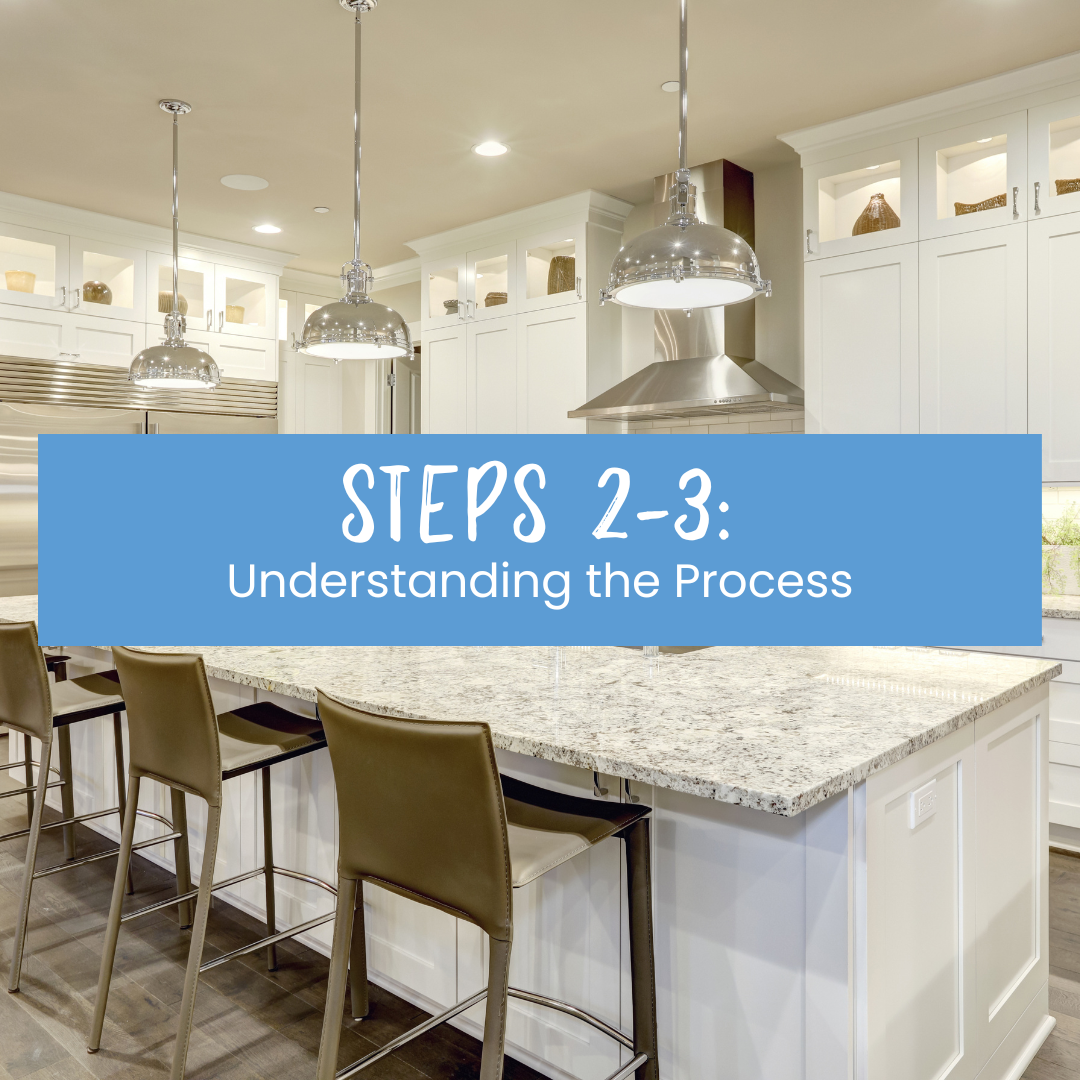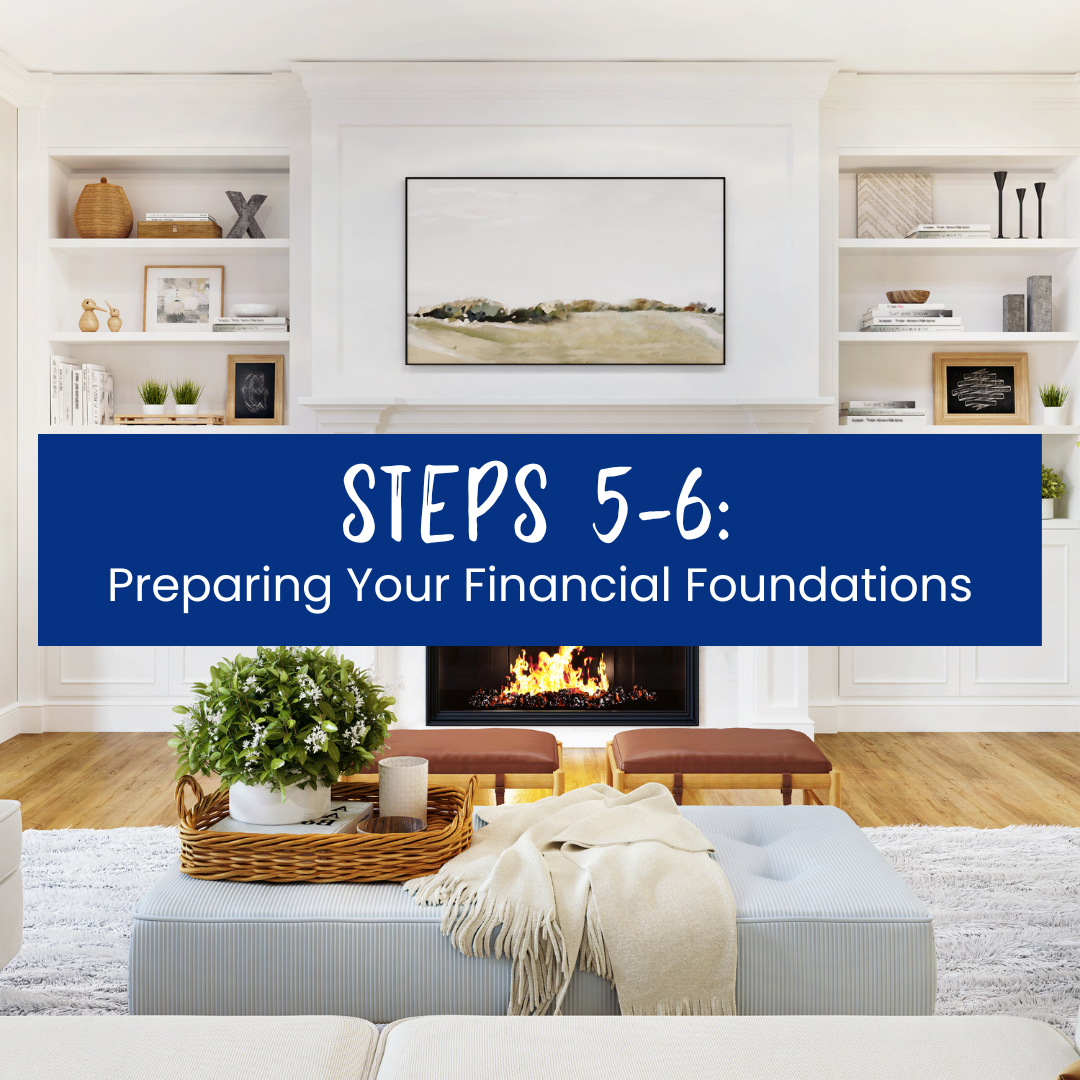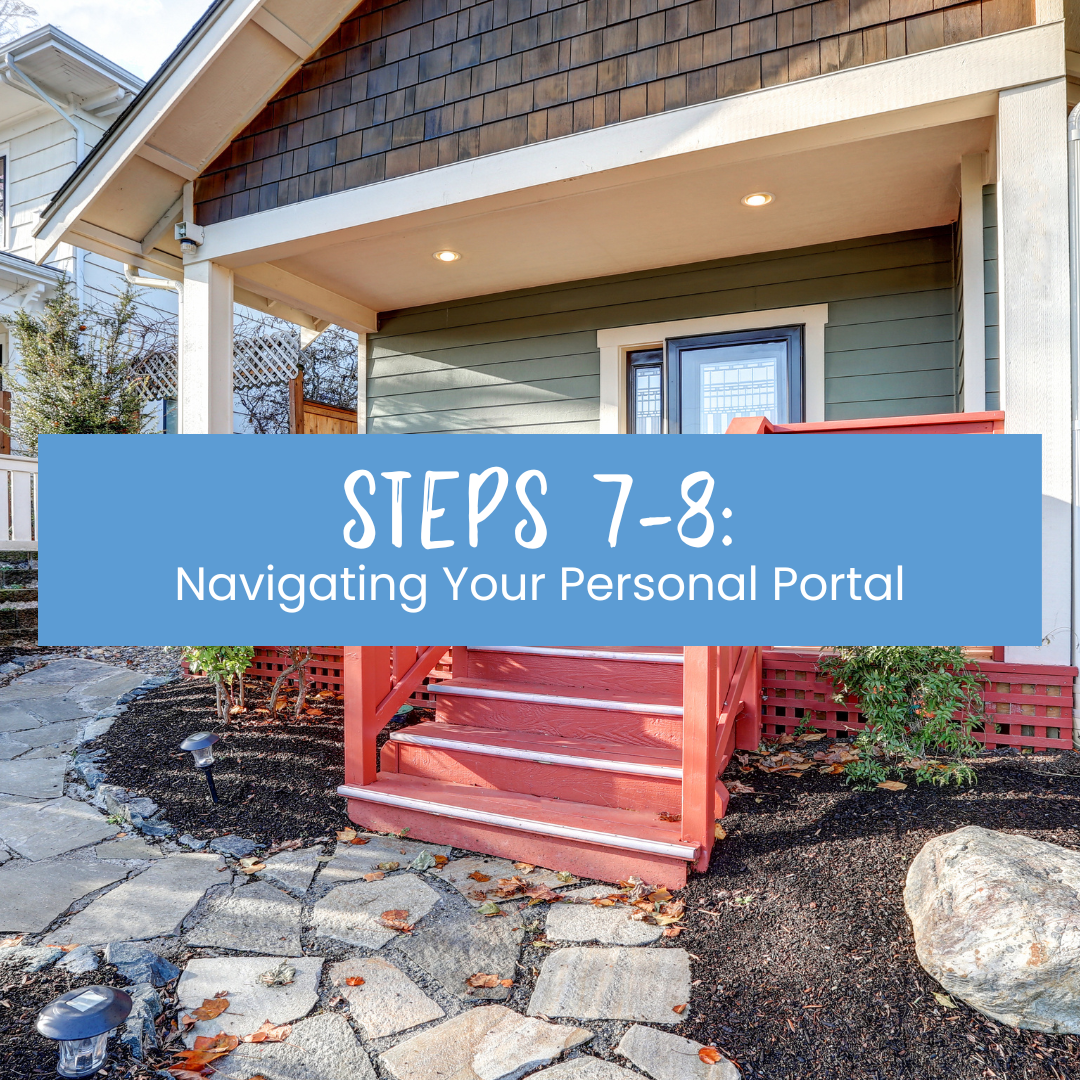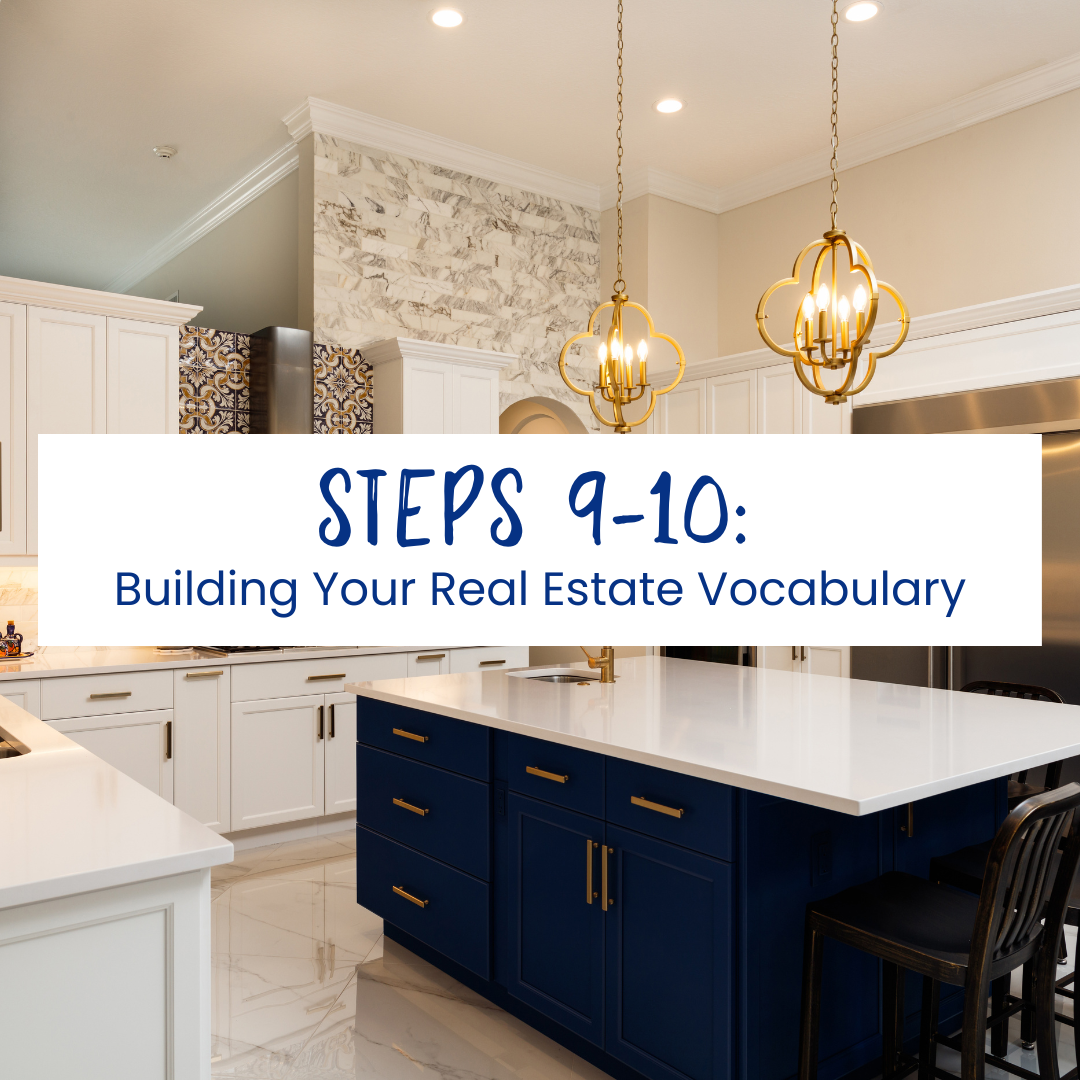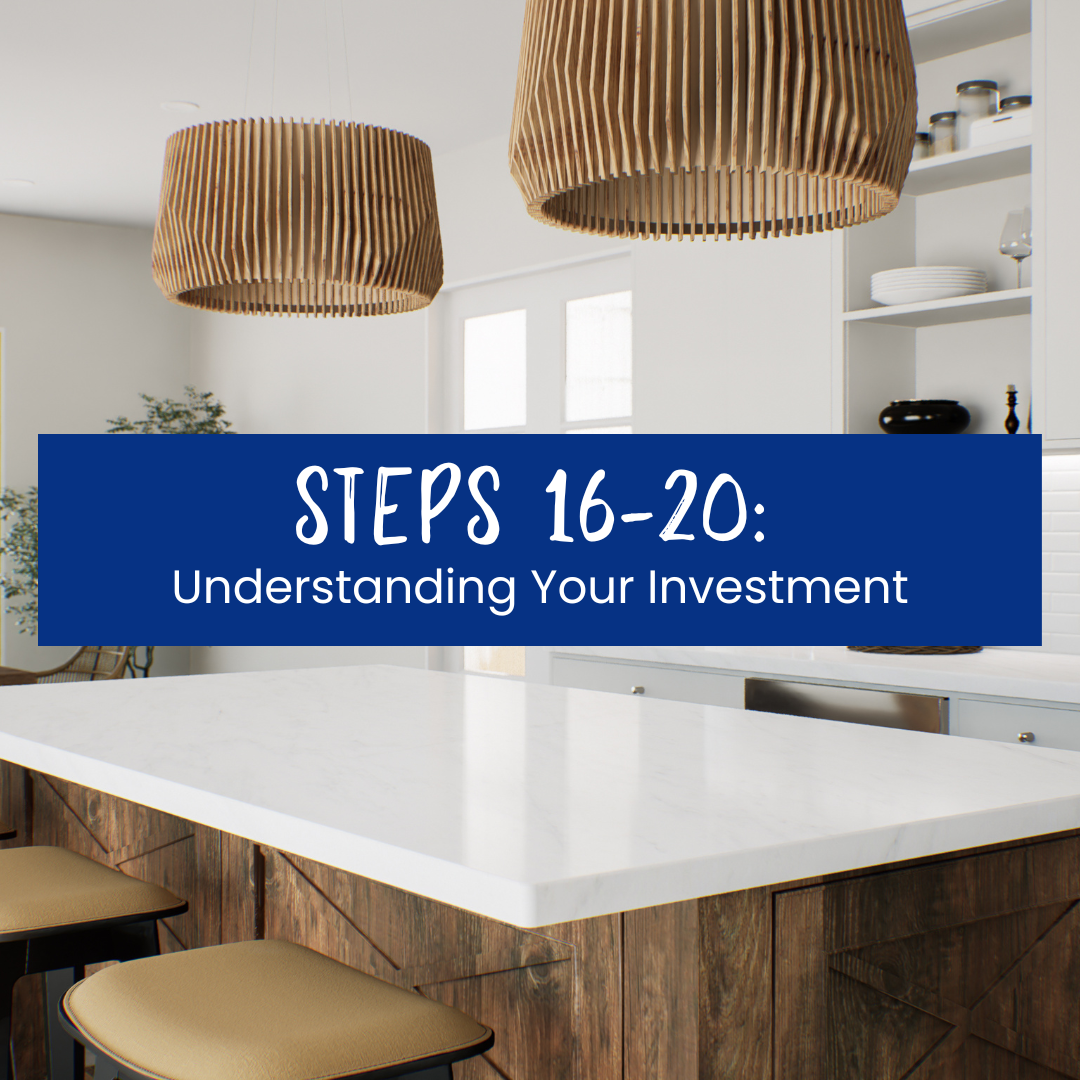Buying Steps 25-27: Digging Into the Inspection
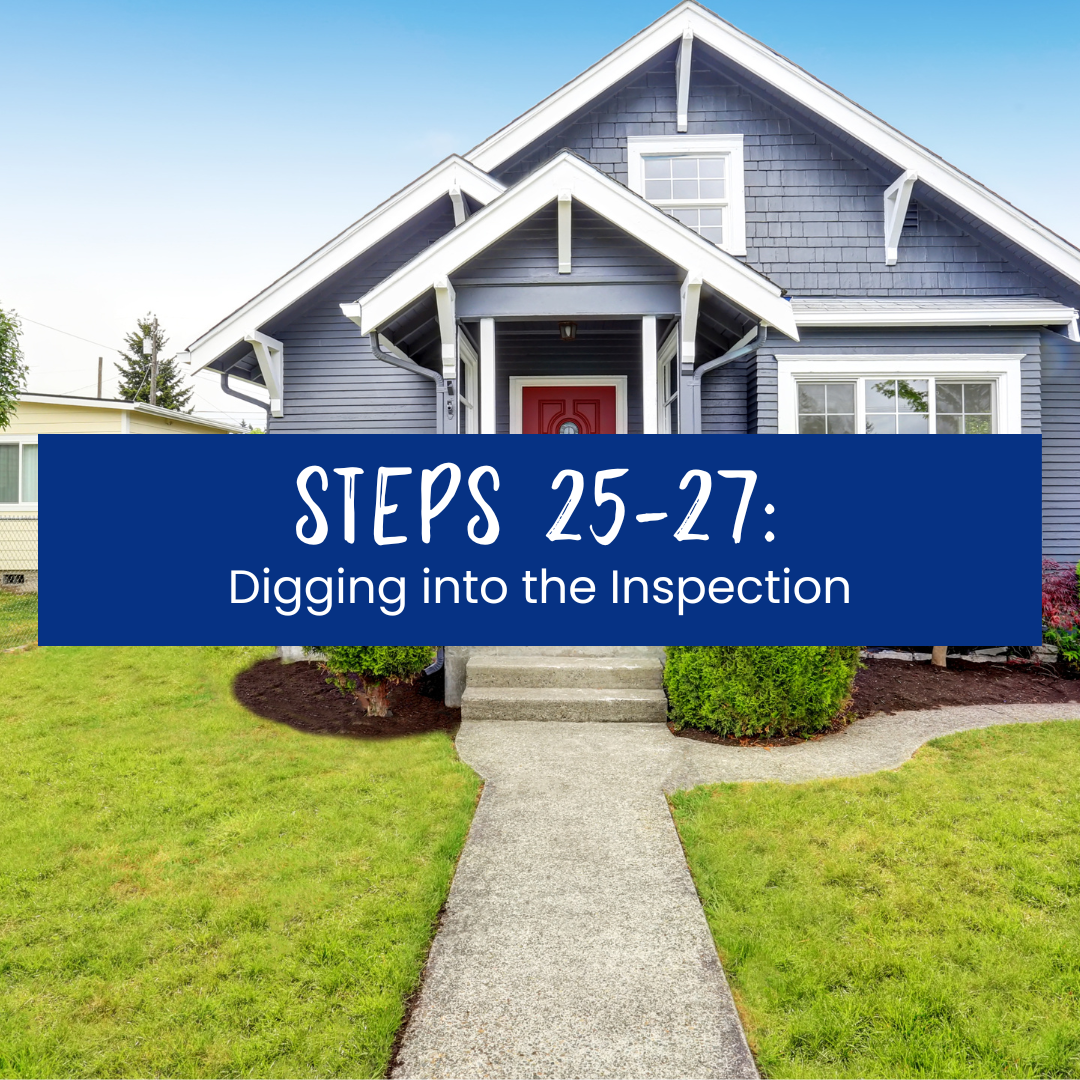
Step 25
Here is what is typically covered during a Home Inspection:
- Attic:
Look for adequate ventilation; water leaks from the roof.
- Basement: Look for water leakage; musty smell.
- Ceilings, Walls, and Molding: Look for loose pieces; drywall that is pulling away.
- Doors and Windows: Look for loose or tight fits; condition of locks; condition of weather-stripping.
- Driveways/Sidewalks: Look for cracks, heaving pavement, crumbling near edges, and stains.
- Electrical: Look for conditions of fuse box/circuit breakers, and the number of outlets in each room.
- Exterior: Look for cracked bricks and siding pulling away from the building. Look at the condition of floor cracks, stains, etc.; condition of the door mechanism.
- Foundation: Look for cracks or water seepage.
- Furnace/Air Conditioning: Look for age; energy rating; Furnaces are rated by annual fuel utilization efficiency; the higher the rating, the lower your fuel costs. However, other factors such as the payback period and other operating costs, such as electricity to operate motors.
- Insulation: Look for the condition; adequate rating for the climate.
- Plumbing: Look for poor water pressure, banging pipes, rust spots, or corrosion that indicate leaks and insufficient insulation.
- Porch/Deck: Loose railings or rot.
- Roof: Look for age, condition of flashing, pooling water, buckled shingles, or loose gutters and downspouts.
- Siding: Look for dents or buckling.
- Water Heater: Look for age, size adequate for the house, speed of recovery, and energy rating.
Many Inspectors will have material on their websites to educate you about what they look for and what they cover. They will happily discuss their process or any questions you have.
Questions? Contact us at andi@andidyer(dot)com or 360-734-6479.
Step 26
From finding a Home Inspector to dealing with surprises — this is your guide to getting a house checked out.
The first thing you need to know about Home Inspection is: You’ll feel all the feels.
There’s the excitement — the inspection could be the longest time you’re in the house, after the showing.
Right behind that comes … anxiety. What if the Inspector finds something wrong? So wrong, you can’t buy the house?
Then there’s impatience. Seriously, is this whole home-buying process over yet?
Not yet. But you’re close. So take a deep breath. Because the most important thing to know about Home Inspection is: It’s just too good for you, as a Buyer, to skip. Here’s why.
A Home Inspector Is Your Protector
An Inspector helps you make sure a house isn’t hiding anything before you commit for the long haul. (Think about it this way: You wouldn’t even get coffee with a stranger without checking out their history.)
An Inspector identifies any reasonably discoverable problems with the house (a leaky roof, faulty plumbing, etc.). Hiring an Inspector is you doing your due diligence. To find a good one (more on how to do that soon), it helps to have an understanding of what the typical Home Inspection entails.
An inspection is all about lists.
The disclosure comes in the form of an outline, covering such things as:
- Mold
- Pest infestation
- Roof leaks
- Foundation damage
- Other problems
During the inspection, an Inspector has three tasks -- to:
- Identify problems with the house that he or she can see
- Suggest fixes
- Prepare a written report, usually with photos, noting observed defects
This report is critical — it’s what you’ll use to request repairs from the Seller, and/or get bids.
The Inspector Won’t Check Everything
Generally, Inspectors only examine houses for problems that can be seen with the naked eye. They won’t be tearing down walls or using magical X-ray vision to find hidden faults.
Inspectors also won’t put themselves in danger. If a roof is too high or steep, for example, they won’t climb up to check for missing or damaged shingles. They’ll use binoculars to examine it instead.
They can’t predict the future, either. While an Inspector can give you a rough idea of how many more years that roof will hold up, he or she can’t tell you exactly when it will need to be replaced.
Finally, Inspectors are often generalists. A basic inspection doesn’t routinely include a thorough evaluation of:
Wells
- Septic systems
- Structural engineering work
- The ground beneath a home
- Fireplaces and chimneys
When it comes to wood-burning fireplaces, most Inspectors will open and close dampers to make sure they’re working, check chimneys for obstructions like birds’ nests, and note if they believe there’s reason to pursue a more thorough safety inspection.
If you’re concerned about the safety of a fireplace, you can hire a certified chimney Inspector. Find one through the Chimney Safety Institute of America.
It’s Your Job to Check the Inspector
We will provide a copy of our Home Inspection Policy to you. In addition to getting recommendations (friends and relatives are handy for those, too), you can rely on online resources such as the American Society of Home Inspectors (ASHI) at the following link: https://www.homeInspector.org/Find-An-Inspector, which lets you search by address, metro area, or neighborhood.
You’ll want to interview at least three Inspectors before deciding whom to hire. During each chat, ask questions such as:
- Are you licensed or certified? ASHI lists Washington’s requirements at homeInspector.org
- Are you insured? For what type of scenario?
- How long have you been in the business? Look for someone with at least five years of experience — it indicates more homes inspected.
- How much do you charge? The average Home Inspection costs about $800. For condos and homes under 1,000 square feet, the average cost is $700. Homes over 2,000 square feet can run $800 - $1,300 depending on add-ons.
- What do you check, exactly? Know what you’re getting for your money.
- What don’t you check, specifically? Some home Inspectors are more thorough than others.
- How soon after the inspection will I receive my report? Home Inspection contingencies require you to complete the inspection within a certain period of time after the offer is accepted — usually 2 – 5 days — so you’re on a set timetable. A good home Inspector will provide you with the report within 24 hours after the inspection.
- May I see a sample report? This will help you gauge how detailed the Inspector is and how he or she explains problems.
How to Read Online Reviews
Take extreme reviews (“she was the best Inspector ever”) with a grain of salt; compare a provider’s reviews on several sites; don’t let a few bad reviews cloud the positives; see if a contractor has addressed negative reviews.
Sometimes you can find online reviews of Inspectors on sites like Angie’s List and Yelp, too, past clients’ feedback is helpful in making your decision.
Show Up for Inspection (and Bring Your Agent)
It’s Inspection Day, and the honor of your presence is not required, but highly recommended at the end. Even though you’ll receive a report summarizing the findings later on, being there gives you a chance to ask questions and to learn the inner workings of the home.
Tips for Attending the Home Inspection
Attending the Home Inspection is one of the most important parts of buying a new home as it’s a huge financial investment with long-term repercussions and you want to make sure the home you’re buying is in good shape. Therefore, we feel strongly that Buyers should always be at the Home Inspection. Yes, you’ll get a written report after the inspection, but it doesn’t give you nearly as clear of a picture of the condition of the house as being there to see any problems for yourself and ask the Inspector follow-up questions. Plus, unless you’re extremely knowledgeable about home construction, it’s difficult to understand what in the inspection report is a big problem or defect and what is really a minor issue. Instead, it’s easy to get worked up about ungrounded outlets, but not realize that the water seepage in the basement is a much bigger and more extensive problem to fix.
Here is our list of tips for attending the Home Inspection:
- Wear comfortable clothes and shoes as the Inspector may ask you to crawl into the basement or get up in the attic to see any problems.
- The Inspector isn’t psychic. He can only see obvious defects and cannot see what is going on inside the walls and plumbing, electrical, etc. It is a snapshot in time that seems to be in good shape on that day.
- Ask questions of the Inspector, especially if you don’t understand what they are explaining to you. It’s crucial you understand each issue and whether it’s a minor issue or an expensive repair.
- Bring a tape measure with you to take any needed room measurements as we may not be able to get back into the home until the walk-through the day before closing.
- Inspection reports are generally emailed to you within 1-2 days after the inspection. As soon as you get the inspection report be sure to email it to me so we can look it over. We’ll then set up a time to discuss any items we want to get bids on, ask the Seller to fix or give a closing cost credit to repair after closing.
Remember that the point of the inspection is to:
- Discover safety issues
- See if there are any structural issues
- Discover any needed repairs to the working components. For instance, we want to make sure that all of the appliances are working, that the furnace and AC units are working, etc.
- We are NOT there to nit-pick because we don’t like the paint colors, there is a dent in the fridge door, the furnace needs to be cleaned, the gutters need to be swept out, etc. No home is going to be perfect (even new construction). Houses have cosmetic flaws and future maintenance issues. Remember, we are mainly concerned with safety issues and things not working.
Water: A Home’s #1 Enemy
- Besides drainage, ask the Inspector about any signs of water damage. Water can destroy the integrity of the home’s structure. So a leaky gutter isn’t just annoying; it’s compromising your foundation.
- Block out two to 4 hours for the inspection for a single-family home. The Inspector will survey the property from top to bottom. This can include checking the water pressure; leaks in the attic, plumbing, etc.; if door and window frames are straight (if not, it could be a sign of a structural issue); if electrical wiring is up to code; if smoke and carbon monoxide detectors are working; if appliances work properly. Outside, they will look at things like siding, fencing, and drainage.
- The Inspector might also be able to check for powderpost beetles, asbestos, lead paint, or radon, depending on what package and concerns you have. Because these tests involve more legwork and can require special certification, they come at an additional charge.
Questions? Contact us at andi@andidyer(dot)com or 360-734-6479.
STep 27
Remember, the Home Inspection is an informational report for you, the Buyer, not a to-do list for the Seller. We should only be concerned about structural issues, safety defects, or appliances/mechanicals not working.
Therefore, here are our tips for reading the inspection report:
- Focus on the summary page of the report, since it typically highlights any major concerns — along with repairs suggested by the Inspector.
- Pay particular attention to issues relating to the: Electrical, Plumbing, Roof, Foundation, Ventilation and Insulation, Exterior, and Structure issues such as water intrusion, as these can be big ticket items to repair.
- If there are any big-ticket items that are concerning to you, decide if you want to have additional inspections performed. For instance, we can bring in a Structural Engineer, a Sewer Inspector, an Electrician, a Pest Inspector, etc. If you want to bring in additional Inspectors, or a contractor for a bid, you’ll be responsible for paying their fees.
- Most likely we are going to ask the Sellers to provide a credit for you to fix the items after closing.
- Remember that the things on the inspection report which are important are:
- Safety issues
- Structural issues
- Working components such as appliances that are not working.
- We should NOT be asking for the paint to be touched up, the gutters to be swept out, etc. No home is going to be perfect (not even new construction. Remember, we are concerned with safety issues and things not working.
Important Home Inspection Terminology
(F) Functional – This letter or term means that the item inspected is working properly, allowing for normal wear and tear.
(NI) Not inspected – A component of the home that wasn’t inspected
(NP) Not present – A component that wasn’t inspected because it was not accessible
(AE) Additional Evaluation Recommended – If you see this term, it means that the Inspector recommends that you investigate the item further to ensure that it’s safe, and working properly, or to determine the root cause of a problem.
(S) Safety concern – Pay close attention to this terminology, since it indicates a possible safety concern. Many Lenders will require these items to be addressed before they’ll approve financing on a home.
(R) General repair – This term indicates that a specific item is in need of repair.
(D) Defect – This term means that a component of the home needs to be repaired or replaced.
Source: Inspection Support Network™ | www.inspectionsupport.com
Questions? Contact us at andi@andidyer(dot)com or 360-734-6479.



